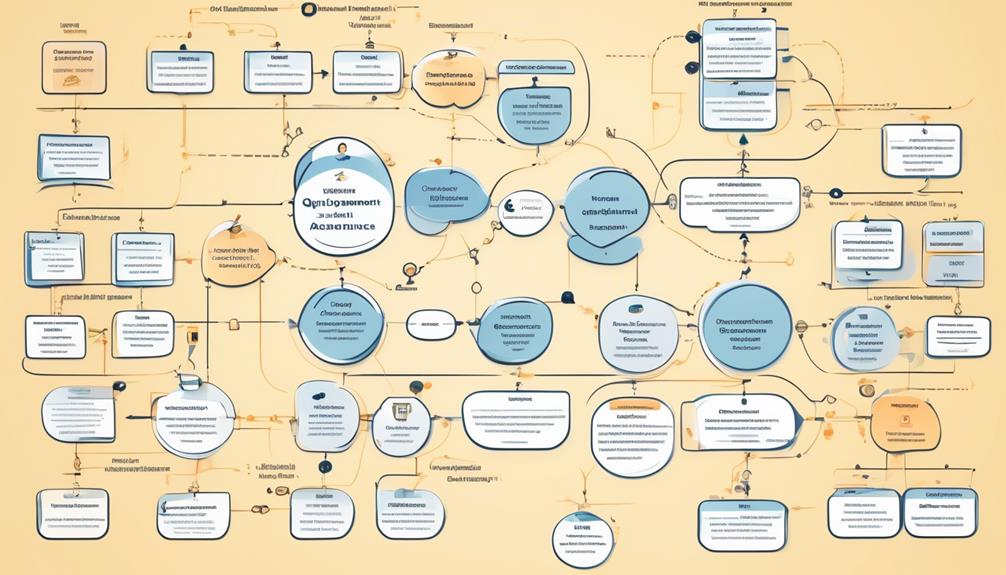Exploratory testing isn’t optional because it helps you uncover issues automated tests often miss, especially those that require human insight and intuition. Automated scripts handle repetitive and regression tests well, but they can’t explore uncharted areas or spot subtle usability problems. By actively engaging with the application, you can discover critical bugs early and better understand the user experience. Stay with us to learn how combining techniques boosts your testing effectiveness.
Key Takeaways
- It uncovers hidden defects and edge cases that scripted tests may miss.
- Human intuition and experience are essential for identifying usability and subtle performance issues.
- Automated testing alone cannot explore uncharted or unexpected application behaviors.
- Documentation of exploratory sessions improves issue tracking, communication, and test coverage.
- Combining exploration with automation ensures comprehensive, reliable software quality assurance.

Exploratory testing is a hands-on approach to software testing where you actively learn about the system while identifying issues. It’s a dynamic process that involves simultaneous test design and execution, allowing you to uncover defects that scripted tests might miss. Unlike automated testing, which relies on predefined scripts, exploratory testing taps into your intuition and experience, making it particularly effective for discovering edge cases or unexpected behaviors. Additionally, understanding the importance of projector technology can enhance your ability to identify subtle performance issues during testing. However, integrating test automation and solid documentation strategies enhances its effectiveness, guaranteeing that your findings are both actionable and traceable. You might think that test automation could replace exploratory testing, but that’s not the case. Automated tests excel at verifying known requirements and repetitive tasks, but they often lack the flexibility to explore new, uncharted areas of the application. When you combine exploratory testing with test automation, you create a thorough testing ecosystem. Automation can handle regression tests, freeing you to focus on exploring complex workflows or user interactions that require human insight. This combination boosts your ability to find issues early and often, saving time and reducing costs in the long run. Documentation strategies are essential for making your exploratory testing efforts valuable beyond the immediate session. As you test, it’s critical to record your observations, steps taken, and anomalies encountered. Effective documentation doesn’t mean writing lengthy reports but capturing enough detail to reproduce issues and understand their context later. This might include screenshots, notes, or recording test sessions. By doing so, you ensure that your findings are preserved for developers and stakeholders, facilitating quicker fixes and better communication. Good documentation strategies also help you review what areas have been covered and identify gaps in your testing coverage. Why isn’t exploratory testing optional? Because it complements automated tests by exploring beyond predefined scripts, revealing issues that automated checks might overlook. It introduces a human element—your intuition and critical thinking—that’s essential for understanding complex user scenarios or identifying usability issues. Without it, your testing process risks becoming overly rigid, missing critical defects that don’t fit neatly into automated scripts. Moreover, the insights gained from exploratory testing inform your test automation, helping you design more effective automated scripts. It’s an iterative process where each approach supports the other, creating a more resilient and thorough testing strategy. In essence, exploratory testing isn’t a luxury or a backup; it’s a core component of modern quality assurance. When combined with robust documentation strategies and smart test automation, it elevates your testing from mere verification to active learning and discovery. This makes it an indispensable part of delivering reliable, user-friendly software in today’s fast-paced development environments.
Frequently Asked Questions
How Does Exploratory Testing Differ From Scripted Testing?
Exploratory testing differs from scripted testing by emphasizing tester creativity and adaptability. You engage in ad hoc testing, exploring the application freely, and often use session-based testing to structure your efforts. Unlike scripted testing, which relies on predefined test cases, exploratory testing allows you to discover unexpected issues through intuitive exploration, making it a valuable approach for uncovering bugs that scripted tests might miss.
Can Exploratory Testing Replace Automated Testing Entirely?
You might think exploratory testing can replace automated testing completely, but that’s like expecting manual strategies and testing heuristics to catch every bug in a universe-sized codebase. While exploratory testing is dynamic and adaptive, it lacks the consistency and speed automation offers. Automated testing handles repetitive tasks flawlessly, ensuring thorough coverage. So, no, exploratory testing can’t replace automated testing entirely—it’s an essential companion in your testing toolkit.
What Skills Are Essential for Effective Exploratory Testing?
To excel in exploratory testing, you need strong skills like keen user experience insight and sharp tester intuition. You should be able to think creatively, adapt quickly, and ask insightful questions that uncover issues others might overlook. Good observation, critical thinking, and effective communication are essential. These skills enable you to explore applications thoroughly, identify potential problems early, and ensure the software delivers a seamless user experience, making your testing more impactful.
How Do Teams Measure the Effectiveness of Exploratory Testing?
You measure exploratory testing effectiveness by using heuristic approaches that evaluate how well testers identify defects and uncover issues. You also rely on tester intuition, observing how quickly and accurately they adapt to new scenarios. Tracking defect detection rates, session charters, and feedback helps you gauge success. Combining these methods gives you a clear picture of whether your exploratory testing efforts are thorough and impactful.
When Is the Best Time to Incorporate Exploratory Testing in Development?
You should incorporate exploratory testing early in your development process, ideally during the initial test environment setup. This approach lets you identify usability issues and potential bugs that might impact user experience before formal testing begins. By doing so, you gather valuable insights, refine your application, and guarantee a smoother user experience, ultimately reducing costly fixes later. Integrating exploratory testing at the right time enhances overall quality and developer responsiveness.
Conclusion
You see, skipping exploratory testing is like leaving stones unturned; you risk missing hidden issues that could cause big problems later. It’s a essential part of uncovering bugs that scripted tests might overlook. Embrace it as a critical tool in your testing arsenal, because in software quality, never trusting only what’s on the surface can save your project from unexpected surprises. Remember, sometimes digging deeper makes all the difference in delivering a solid product.









